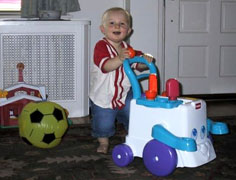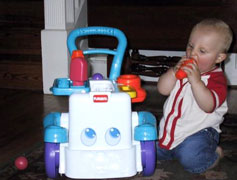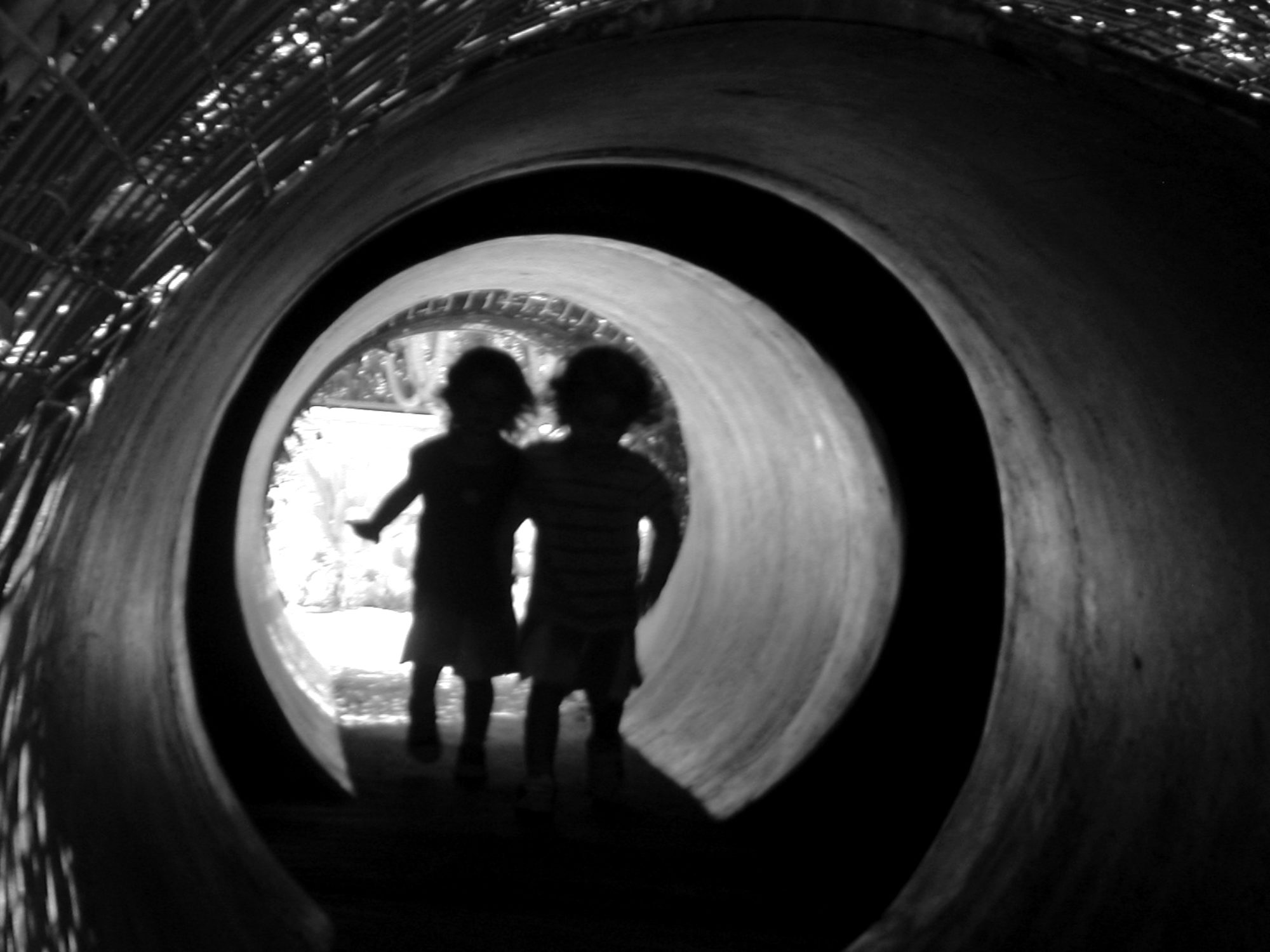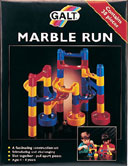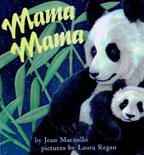by Diana Day
Dr. Eileen Pearlman is director of Twinsight and co-author of Raising Twins: What Parents Want to Know (And What Twins Want to Tell Them).
Dr. Pearlman, an identical twin herself, is a licensed Marriage, Family and Child Therapist who specializes in twins and twin parenting.
In this Q & A with BeTwinned.com, Dr. Pearlman discusses identity development in twins and multiples and what parents can do to celebrate being a twin or multiple and to also create healthy individuals.
BeTwinned.com: When are twins and multiples aware of themselves as different, or aware of themselves as a pair, or more, as the case may be?
Dr. Eileen Pearlman: It’s between 5 to 6 months old when they start becoming aware that there’s someone else there and that the mirror image is not themselves, it’s another person.
BeTwinned.com: Is there a point at which they are aware that there’s an “otherness,†a sense that they are somehow different than children who are born one at a time?
EP: Regarding the separation and individuation process for everyone, the first three months of even a singleton’s life is usually spent in an autistic state, a womb-like state. The infant needs to be fed and quieted and comforted and also dry. And there’s not much interaction with anyone outside.
Between three to six months they’re breaking out of the state of autism, and they’re becoming more aware of mommy or daddy taking care of them.
This is a symbiotic stage when the mommy and baby are like one, or the daddy and baby are like one; the mother tries to read her child’s needs. So twins are not very aware of each other between birth and six months old. And then, at about six months old, all of a sudden, they’re starting to become aware, in little glimpses at a time, of another in their life, whether it’s mommy as a separate person and then later on a sibling, a twin, as a separate person.
When you’re holding a young baby in your arms and when they touch your hair, they’re not really aware of whether it’s your hair or theirs — it’s all one. You and baby are one. And as they get older, they become aware that it is your hair, when they touch it, is not theirs. From six months to 36 months, they branch out more into the separation-individuation process. Little by little, they become more and more aware of themselves as being separate from other.
Some things twins do to find out whether they’re separate from one another – they hit up against one another, or they bump up against others. If I bump up against you, I know that that’s not me, that’s you, and this is me. They’re starting to be able to tell what’s “me,†and what’s “not me.†This occurs during the “terrible twos,†when everything is “no†to mommy and daddy. They’re not only saying no to mommy and daddy, they’re also saying no to each other.
You’ll also notice that at 18 months or two years old, they’ll start biting and fighting with one another. It’s because they’re starting to separate and individuate from each other. They’re realizing, that’s “me†and that’s “not me.â€
Concerns about biting happens to be one of the most frequent questions parents will ask around 18 months to two or three years of age. Twins don’t have much language at that time. With so much emotion and exploration of their senses, they just put everything in their mouths, and sometimes it happens to be the other person. At first when one twin bites the other twin, they’re probably just as frightened as the one being bitten. All of a sudden, they realize that that’s someone else they’ve bitten. That’s part of the awareness that there’s another person and this other person is separate from me.
BeTwinned.com: Should parents cultivate a sense of specialness in their twins or multiples, a sense of you are twins, you are multiples, or is it more important to cultivate individuality, or both?
EP: There is a unique relationship that twins have with each other, some twins more than others. Monozygotic twins tend to have a closer relationship than dizygotic, but that may not always be the case. So if there’s a close relationship, cultivate that — why say, “You can’t be friends?†It’s also very important to cultivate individuality – encourage twins to see themselves as separate, independent individuals because it’s eventually what they’re going to be in the world.
A lot of people make twins special because they’re twins — and it is rare to have someone born at the same time as you. It’s part of who you are as a twin — but it’s not all of who you are. A twin is a unique individual who also happens to be a twin. I think twins get a lot of accolade and attention for just being born a twin. And sometimes twins feel that they don’t have to do anything special because they get recognition for just being born this way. They may not live up to their potential because they’re getting attention for their twinship.
BeTwinned.com: Related to that, how important is it for twins to see themselves reflected in movies, books, TV shows? Do they need to see themselves out there in the world, reflected back at themselves? Should parents make sure to have books about twins, for example, or is that just giving them more attention for being twins?
EP: They are twins, and that’s reality, and I think that having some books about twins and twinship is great. I don’t mean to say that twins shouldn’t feel special because they’re twins, it’s just that that shouldn’t be all of who they are. They are individuals and they are also twins. Seeing themselves just as twins is limiting.
[It’s good to read] books to children about them being twins, because they are faced with challenges non-twins do not face – they have to share earlier than non-twins, they have to share their grade in school, maybe they have to share some friends. Given the challenges that twins face, I think it’s important to see that other twins are facing these similar challenges.
When we see twins that are more the exception rather than the rule – these are twins who are always dressed alike, and are treated as one person, or twins that are labeled the “good twin†and the “evil twin†– when twins are being sensationalized, I think that is not at all helpful.
BeTwinned.com: In BeTwinned toy reviews, we want to review toys that are good for sharing, but we also want to review toys that are simply great toys even if they are really best played with alone. Is it OK for parents of twins to buy toys that belong just to one twin, or should twins share everything? And, is it OK for parents of twins and multiples to double-up on some special or highly-desired toys? At first, I was afraid I was spoiling my kids if I bought them each a their own Thomas train, for example.
EP: It’s not just OK, it’s important. In order to be able to share something, you first have to own something. You can’t go straight to sharing. First it has to be learned that this is mine, and then that’s yours, and then OK, we can share.
For someone to have ownership is really important because sometimes what’s on the outside is what is reflected on the inside. If I have my own toys and my own clothes, that means I’m my own person. If I have to share everything on the outside, then do I also have to share my identity and myself inside? So the inside and the outside work together in this way. I think it’s important for parents to be able to give twins their own toys, to be able to have their own thing that they covet. This gives them a sense of ownership, a sense of pride, a sense of identity. Yes, I can see where swings and big-ticket items you could have one that they have to share. But there are certain things where they may want to have one of their own. Maybe they want something a little different, or maybe they want the same thing.
I remember when the Cabbage Patch dolls were in, and one mother told me she was going to get one of her twins a Cabbage Patch doll and the other one something else. And I said, “Well, what if they both want a Cabbage Patch?†Even if they were both singletons, they may both want a Cabbage Patch doll.
It is important for parents to follow their children’s lead to see if they want the same or if they want something different. And if there’s something that’s coveted, we need to listen to them. If they both want to take ballet, fine. But if one wants to take ballet and one wants to take gymnastics, it’d be better to say, OK, this is what I need to do right now. If you both want to take it, fine, but if not, it’s all right.
BeTwinned.com: That’s very empowering. You feel pressure from society’s values that they must always share and that you’re spoiling them if you buy them two Thomases or two Cabbage Patches.
EP: No, you’re not spoiling them at all. There is a lot of pressure. I had a mother in my group just last week – she has 15 month old twin boys. She said, “They should be sharing, they should be the same.†And I said, “Why should they be the same? Even identical twins are not the same.†We need to see where each of them is, and we need to see where they overlap. Sometimes the overlap may be great. I use the example of one twin being a red circle and the other being a yellow circle, there are places where they overlap to make orange. Sometimes there is a big overlap and sometimes there’s not. There’s a lot of red and yellow in each one and there’s orange. So you have to pay attention to all of that.
BeTwinned.com: As twins get older and get ready to go to school, should parents look for schools that allow flexibility in classroom placement, or should there be a set rule that twins should not be in the same classroom?
EP: There should be not be a rule regarding twins being placed together or apart. Some twins flourish quite well being apart. Some twins who haven’t spent any time apart from each another and have not had their own individual identity established, may have a difficult time in separate classrooms. It may be very traumatic for them. So we have to take little steps – put them together in Kindergarten or pre-school and little by little, gradually get them to spend some time apart. So, it depends on the twin pair and on the twins themselves. And, each year, their needs may change. It is a good idea to evaluate the school placement on a year-to-year basis with the children and the school. Maybe one year they’ll do well together and another year they won’t do well together.
For example, maybe they’ve been apart for the first and second grade, and then for third grade one teacher is really great and one of them is really marginal. You may think, well, gee, which one of them am I going to sacrifice? You may think, this may be a time for me to put them both in the same class. Or maybe one teacher specializes in science, and they both really love science – you may think that it’s a good year to put them together. If they’re really clinging to one another and having a hard time separating or if they’re feeling a lot of competition – maybe one is further ahead than the other — you may think it’s too much pressure on the twin pair and it may be better if they were in separate classes. Sometimes if twins are constantly checking with each other all the time, they are not doing their own work and are not progressing as far as they can.
Also, it’s really important for parents to have separate conferences with each teacher for each child. Sometimes the teacher will only hold one conference for both children. In those cases, many parents say they leave the conference and they don’t remember what was said about each child. Twins are two separate individuals who need two separate conferences. They have separate needs. In the conference, we want to talk about the specific child and as a part of the conference, how the twins relate to each other, but not for the whole conference.
BeTwinned.com: I try to let people know right away which twin is which and who is wearing what color today. Some people make jokes as if they’re not even going to try to tell the twins apart, but I still try to tell them who is who.
EP: Good for you. What does it tell the twin [when people don’t try]? It tells the twin “I don’t really care to know who you really are? Why bother?†People come up to the twins in the stroller and say, “Double trouble, double this, double that.†Well, what does the child feel? They might feel that they’re a lot of trouble or that people don’t even care to know who they are.
BeTwinned.com: What are common misconceptions about the identity development of twins?
EP: There are a lot of myths about twins. Some people, teachers, parents, aunts, uncles think that there’s a good twin and a bad twin or that there’s always a leader and always a follower. It has to do a lot with labeling of twins. The parents have to help the twins figure out that we don’t label. We tell parents that when people ask, “Which one is the fussy one?†to say, “We don’t label. Sometimes one is and then the other.â€
Yes, people will be asking, and I understand that it’s their way of telling the differences, of telling them apart. Sometimes they label which one is the reader or which one is the mathematician, when maybe they both are, or neither. People tend to do that — the constant comparison and the labeling. I think that this can be hurtful because once you have the label, it’s hard to remove that from becoming a self-fulfilling prophecy.
BeTwinned.com: Is there a common misconception that twins will always be in their own world and can’t relate to the other kids on the playground or that they will have social development problems?
EP: I think some people do have that perception, particularly with same sex twins, and especially when they’re younger. People think that they’re always going to be together. We see that sometimes on television or in movies that twins are always together, they don’t have individual friends. There’s all kinds of myths about twins – they will not be friendly with their other siblings; there’s always a dominant one and a passive one; do they have ESP?
In my book I talk about the myth that twins are supposed to be best friends. Well, sometimes they’re not best friends. Sometimes they have different personalities and different temperaments and different likes and dislikes. They may clash at times. So, they’re not always going to be best friends with each other all the time. For twins who are more similar in their temperaments, they may be best friends much of the time, but that’s not always the case. Some children are just automatically more social, and they want to be with their twin, but they also want to be with others as well. They’re children, and sometimes they may want to play together and sometimes they may want to play apart.
